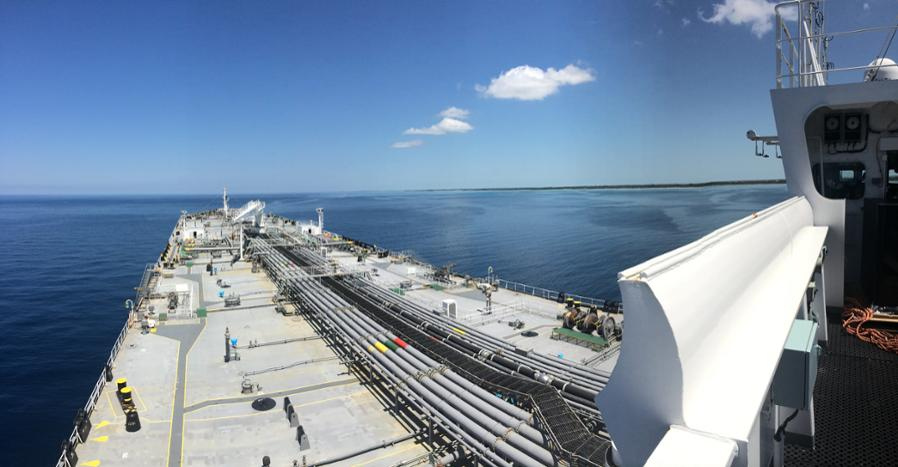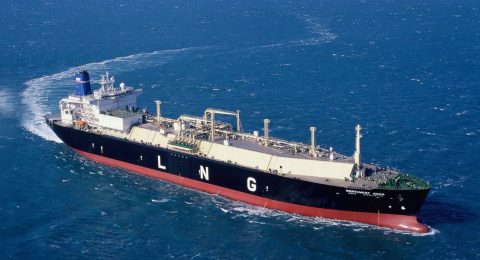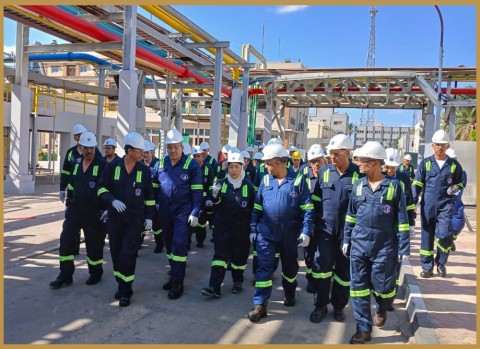As tanker owners with aged VLCC tankers were looking for an opportunity in the scrap market, in order to send their vessels for demolition, the opportunity of floating storage plays rose, giving those older ship another lifeline, at least for a short period of time. The global surplus of crude oil and subsequent contango had created new chartering opportunities. However, despite high hopes, such a “market” never actually materialized.
According to the explanation provided in shipbroker Gibson’s latest weekly report, “the simple answer is that the contango structure never got sufficiently steep to justify the associated storage costs. Despite the 6 month spread in ICE Brent Futures widening to $7.40 in mid-January, 1 year TC rates of around $65,000/day (in the West) at the time meant storage costs of approximately $8.50 for a six month period. Whilst storage costs have now come down, the contango has narrowed and a number of other factors continue to serve as a barrier to floating storage”.
The London-based shipbroker noted that “firstly, shore based storage is cheaper than floating storage meaning this option needs to be ruled out before storage at sea becomes viable. However, on some occasions even if tankage remains available on shore, competitive forces mean those who control the storage may be unwilling to lease it to those who need it. Far inland, much attention is focused on the storage facility at Cushing, Oklahoma where stocks hit 448.9 million barrels this week and expectations that the facility might be full by May. Outside of the US, accurate data is much harder to come by. Since the collapse in crude prices, it has been apparent that China is stockbuilding, both commercially and for its strategic reserves, but for how long can China continue to absorb surplus crude? On a smaller scale India is reported to be opening its 9 million barrel strategic reserve this month which will, if only in the short term, provide an additional outlet for surplus crude. In Europe, Genscape recently reported ARA crude storage being around 57% full, compared to Cushing where stocks are 65% full”.
Meanwhile, according to Gibson, “the refining industry also presents another barrier to storing at sea. The collapse in global crude prices has bolstered refining margins, prompting higher refinery crude runs, helping to push the surplus downstream, limiting the need for crude storage. However, whilst higher refinery utilisation limited floating storage, demand for crude and product transportation has remained firm, supporting tanker earnings. With a portion of the global crude surplus being pushed downstream, questions begin to arise as to whether product floating storage will emerge as witnessed in 2009-2011. However, there are barriers here too.
The first issue being the backwardation in some product futures, particularly gasoil. The second is the fact that the shore based storage landscape has changed dramatically since the last floating storage play owing to a number of projects to convert refineries into storage depots, particularly in Europe”, said the shipbroker.
Gibson also noted that “beyond a contango play, logistical reasons may necessitate an increase in short term crude floating storage as charterers are forced delay discharge until tankage becomes available and in the process, constrict tonnage supply. Going forward, the impending refinery maintenance season is likely dampen demand for crudes, leading to a more pronounced surplus and an increase in demand for storage. As maintenance season typically curtails tanker demand, floating storage could become profitable again, providing a contango steep enough to offset storage costs develops. Thus, for how long land based facilities can continue to soak up surplus crude remains a burning question”, it concluded.
Meanwhile, in the crude tanker market this week, in the Middle East, Gibson said that it was “a repeat performance to last week for VLCCs … good levels of enquiry, but with availability still in quite reasonable supply, the market never reached critical mass and it seems as if Owners’ attempts at a spring offensive will continue to flounder in the seasonal mud. Rates stayed in the very low ws 50s to the East, and high ws 20s to the West accordingly. Suezmaxes started hopefully also, but got worn down as the week progressed to end up on the wrong side of ws 90 to the East and towards ws 45 to the West, with little sign of an early turnaround. Aframaxes were steadily picked off, and in the end sufficiently so to tighten supply, and allow for rates to build modestly to 80,000 by ws 120 to Singapore, where they should now consolidate for a while”, the shipbroker concluded.
Source: Hellenic Shipping News












